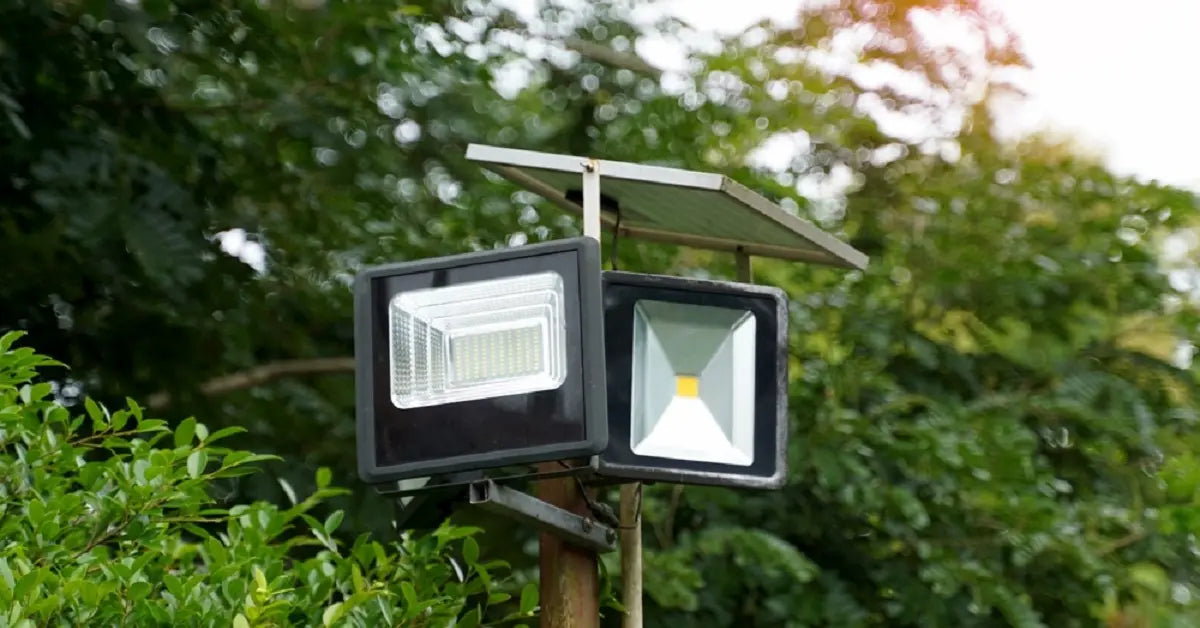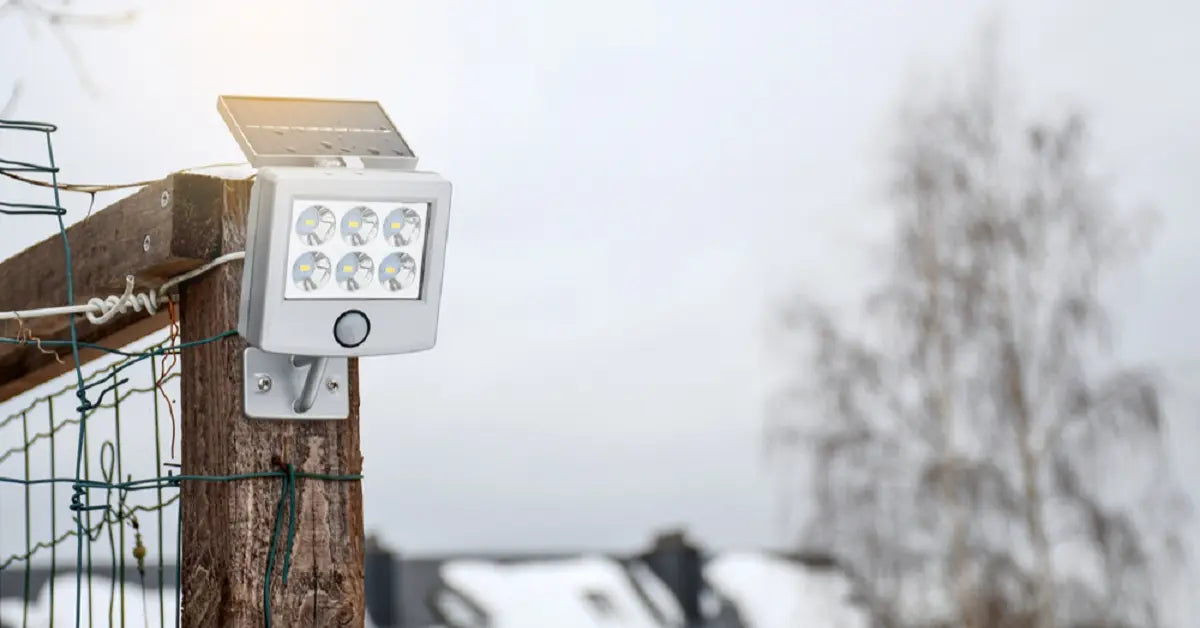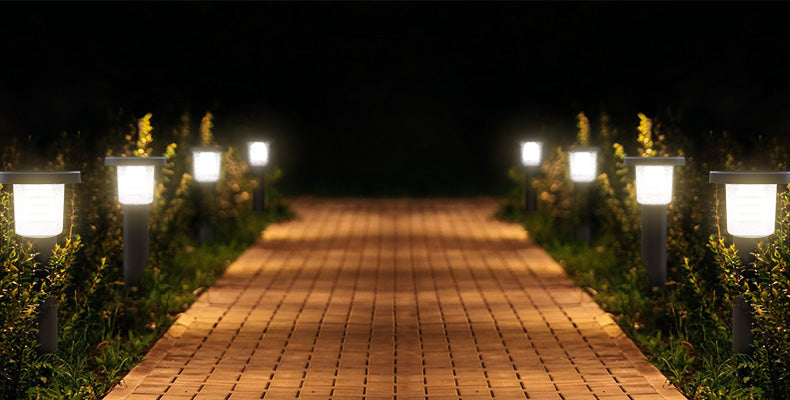If you've ever wondered how solar lights can illuminate your yard all night when the sun only shines during the day, you're asking exactly the right question.
The answer is simple: yes, solar lights absolutely need batteries. But understanding why they need them—and which batteries work best—will change how you think about solar lighting entirely.
Let me walk you through everything you need to know.
🔑 Key Takeaways: Why Batteries Are Essential
- Energy Storage: Batteries capture and store solar energy during the day, preventing waste
- Nighttime Power: They release stored energy after dark when the solar panel stops generating electricity
- Consistent Output: Quality rechargeable batteries provide stable power through repeated charge cycles
- Weather Buffer: Large-capacity batteries store enough energy to maintain performance during cloudy periods
The Short Answer: Yes, and the Battery is the Secret to Their Magic
Here's the straightforward truth: every solar light contains a rechargeable battery, and it's the component that makes the entire system work.
Without that battery, your solar light would only function while the sun is directly shining on it. That's not particularly useful for outdoor lighting.
The battery acts as an energy storage reservoir, capturing sunlight during the day and releasing it as light after dark. It's what makes solar lights independent, efficient, and free from both electrical wiring and fossil fuel consumption.
Think of it as the engine that drives the whole operation.
Why Solar Lights Need Rechargeable Batteries

Let me break down the three fundamental reasons why batteries aren't optional—they're essential.
Energy Storage: A Power Bank for the Sun
Solar lights operate using photovoltaic (PV) cells—those shiny panels on top of the fixture. During daylight hours, these cells convert sunlight into electrical energy.
But here's the thing: that energy needs somewhere to go. You can't just let it dissipate into thin air.
The battery functions exactly like a power bank for your phone. It captures and stores the electrical energy generated by the solar panel throughout the day, holding it in reserve until it's needed. Without this storage mechanism, all that captured sunlight would be wasted the moment the sun sets.
Nighttime Operation: Powering the Light After Dark
This is where the magic happens—and where the battery proves its value.
Once darkness falls, the solar panel stops generating electricity. The photovoltaic cells need sunlight to function, so they go dormant until morning.
The battery takes over at this point. It releases the stored energy in a controlled flow, powering the LED bulb throughout the night. This stored power ensures illumination exactly when you need it most—when natural light is gone.
Without a battery, your "solar light" would be completely useless after sunset. It would be a daytime-only decoration.
Consistent Performance: Why a Battery is Non-Negotiable
Rechargeable batteries are specifically engineered for repeated charge and discharge cycles. This isn't accidental—it's fundamental to their design.
This cycling capability ensures consistent power output night after night. Even during stretches of cloudy weather or shorter winter days, a quality battery maintains reliable performance by drawing on its stored reserve.
The battery also regulates voltage and current flow, protecting the LED from power fluctuations that could shorten its lifespan. It's not just storage—it's intelligent power management.
The Intelamp Advantage: A System Built Around a Better Battery

Now that you understand why batteries are critical, let's talk about what separates mediocre solar lights from exceptional ones.
It all comes down to two factors: battery capacity and charging efficiency.
Superior Storage: The Power of a 6000mAh Battery for Cloudy Days
Battery capacity is measured in milliamp-hours (mAh). This number tells you how much energy the battery can store.
Think of it like the gas tank in your car. A bigger tank means more fuel, which means you can drive farther between fill-ups.
A high-capacity battery provides longer runtime and creates a buffer for less-than-ideal conditions. When you experience several cloudy days in a row, a small battery (say, 600mAh) will drain quickly and leave you in the dark. A larger battery can store multiple days' worth of energy, maintaining performance even when weather isn't cooperating.
This is precisely why we engineered our lights with substantial battery reserves. More storage equals more reliability.
Superior Charging: How a Separate Panel Guarantees a Full Battery

Here's where most solar lights fail: they have decent batteries but can't charge them properly.
The problem? Fixed, integrated panels that force you to compromise. You either place the light where you need illumination (often in shade) or where the panel can get sun. You can't have both.
A separate panel with an extended cable solves this completely. You install the light fixture exactly where you need it—under an eave, on a shaded wall, wherever makes sense. Then you position the solar panel in the optimal spot for maximum direct sunlight.
The result? Your battery gets a full, healthy charge every single day. Typically, solar panels need 6 to 8 hours of direct sunlight to fully charge the battery. With a separate panel, you can actually achieve this, regardless of where the light is mounted.
To see these principles in action, consider a high-performance 3-head solar light from Intelamp. It was engineered specifically to solve the battery performance issue by pairing a massive 6000mAh battery with a separate solar panel on a 9-foot cable.
The separate panel ensures maximum sun exposure. The large battery stores all that captured energy. And dual motion sensors ensure the stored power is used efficiently, extending runtime even further.
It's a complete system built around battery optimization.
What to Know About Replacing the Batteries
Eventually, even the best rechargeable batteries will need replacement. That's normal. Understanding how to do it correctly will save you money and frustration.
Use the Right Type of Rechargeable Battery
Solar lights are designed to work with specific rechargeable battery chemistries. The two most common types are:
- NiMH (Nickel-Metal Hydride): The most popular choice for solar applications. They're efficient, environmentally friendly, and offer excellent longevity.
- Li-ion (Lithium-ion): Found in premium solar lights. They provide higher energy density, faster charging, and longer cycle life.
When replacing batteries, you must match both the type and specifications of the original. Check the voltage (typically 1.2V for NiMH) and capacity (measured in mAh). Using the wrong specs can result in poor performance or even damage to the charging circuit.
Don't mix battery types in the same fixture. Stick with what the manufacturer designed it for.
Why You Should Never Use Regular Batteries
This is critical: never use regular alkaline batteries in solar lights for long-term use.
Here's why. Alkaline batteries are not designed to be recharged. Solar lights charge their batteries every single day using the solar panel's output.
Attempting to charge a non-rechargeable battery creates serious problems:
- The battery can leak corrosive chemicals, damaging the battery compartment and internal circuitry
- Overheating can occur, creating a safety hazard
- Performance will be terrible—dim light output and short runtime
Some people suggest using alkaline batteries temporarily to test if the LED bulb works (with the solar panel covered to prevent charging attempts). That's fine for a quick diagnostic test, but it's not a solution.
For actual operation, only use proper rechargeable batteries designed for solar applications.
Understanding Battery Lifespan (Typically 1-3 Years)
Even high-quality rechargeable batteries degrade over time. It's chemistry and physics—unavoidable.
The average lifespan for a solar light battery is 1 to 3 years, depending on usage patterns, climate, and battery quality. Premium batteries in well-designed systems can push toward the longer end of that range.
The primary indicator that replacement is needed: reduced runtime in the evening, even after a full sunny day. If your light used to stay on for 8 hours and now barely makes it to 4 hours, the battery has lost capacity.
Don't wait until the light stops working entirely. Replace the battery when you notice declining performance.
Simple Maintenance for a Longer Life
You can maximize battery lifespan and overall performance with straightforward maintenance practices:
Keep Solar Panels Clean: Dust, pollen, leaves, and bird droppings block sunlight and reduce charging efficiency. Wipe the panel regularly with a damp cloth—monthly at minimum, weekly if you live in a dusty area.
Ensure Proper Placement: The solar panel needs direct, unobstructed sunlight for 6-8 hours daily. Check for shadows cast by trees, buildings, or structures. Even partial shade dramatically reduces charging capacity.
Check Connections: Every few months, inspect the battery compartment. Ensure batteries are properly seated and making good contact with the terminals. Corrosion on terminals can be cleaned with a small wire brush or fine sandpaper.
Replace When Needed: Don't limp along with dying batteries. When performance drops, replace them promptly with fresh, high-quality rechargeable batteries that match the original specifications. Your light will perform like new again.
Summary: Why the Battery is the Foundation of Solar Light Performance
Let's wrap this up with the essential points:
• Solar lights require rechargeable batteries—they're not optional accessories, they're core components that enable nighttime operation
• Battery capacity matters immensely—larger capacity (measured in mAh) means longer runtime and better performance during cloudy weather
• Proper charging is just as important as capacity—a separate solar panel allows optimal placement for maximum daily charging
• Use only rechargeable batteries designed for solar applications—NiMH or Li-ion chemistries matched to the manufacturer's specifications
• Never use regular alkaline batteries—they're not rechargeable and will leak, damage the light, or create safety hazards
• Batteries typically last 1-3 years—plan for replacement when runtime noticeably decreases
• Simple maintenance extends battery life—keep panels clean, ensure direct sun exposure, and check connections regularly
Explore Outdoor Lights Engineered for Reliability
Understanding how batteries work in solar lights gives you the knowledge to make smart purchasing decisions.
When you're ready to invest in solar lighting that's built around superior battery performance—with ample storage capacity and optimized charging systems—you'll be making a choice that pays off in years of reliable operation.
Armed with this knowledge, you can confidently discover a range of reliable solar outdoor lights that are engineered for efficiency, durability, and consistent performance. Look for products with high-capacity batteries, separate solar panels, and quality components that match what you've learned here.
Your outdoor spaces deserve lighting that works—night after night, year after year.
More Resources
How Do Solar Lights Work? The Ultimate Simple Step-by-Step Guide
Do Solar Lights Need Direct Sunlight? The Complete 2025 Answer
How Long Do Solar Lights Last? Engineer's Guide to Durability (2025)



